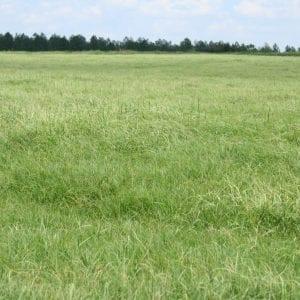
Proven Methods for Maintaining Your Hayfield During Dry Summer Months
Proven Methods for Maintaining Your Hayfield During Dry Summer Months
Maintaining a hayfield during dry summer months requires extra care and smart strategies. Drought conditions can reduce yields, increase weed pressure, and stress your forage stand. Below is a complete guide to help you protect your hayfield and maintain productivity, even when the rain won’t come. ☀️🌾
1. Choose Drought-Tolerant Forage Varieties
Selecting the right species can make all the difference in dry weather. Think of it as picking the best dance partner for a hot summer party!
Bermudagrass – Thrives in heat and limited moisture. (No sweat for this grass! 😅)
Native prairie grasses – Deep-rooted and adapted to local climates. (Like that one friend who’s super chill no matter where you take them!)
Alfalfa – Offers drought tolerance thanks to its strong taproot. (Seriously, this plant has roots deeper than the secrets of your best friend! 🤫)
📌 Tip: Consult with your county extension office or seed supplier to choose the best variety for your region.
2. Maintain Proper Cutting Heights
Cutting too low during a drought can weaken your forage stand and reduce regrowth potential. Remember, nobody likes being buzzed too closely!
For grasses: Leave 3–4 inches of stubble. (Let them feel a little lofty!)
For legumes: Leave 2–3 inches. (They need their beauty nap too!)
Taller stubble shades the soil, reduces moisture loss, and protects the plant base. It’s like giving them an umbrella on a sunny day! ☂️
3. Adjust Cutting Frequency
Growth slows during hot, dry weather. Let the plants fully recover before cutting again, after all, patience is a virtue!
Increase intervals between cuts.
Harvest only when the stand has fully regrown. (Don’t be in too much of a hurry! Like waiting for the pizza to cool after the oven! 🍕)
Focus on quality and regrowth, not quantity.
4. Control Weeds Effectively
Weeds compete for water and nutrients and can quickly take over a stressed field. Think of them as uninvited party crashers...let’s keep them out!
Mowing: Prevents weeds from going to seed. (Time to break out the dance moves and mow them down!)
Spot spraying: Use herbicides carefully and only when needed. (Like using a laser focus on those pesky pests!)
Grazing: Light rotational grazing can help reduce weed growth. (Let the goats take a turn—they’re like the lawn mowers of nature!)
5. Use Controlled Grazing
If your hayfield doubles as a grazing area, protect it during drought. Let’s treat it like a VIP section at a concert, keep it exclusive!
Rotate livestock frequently.
Avoid overgrazing vulnerable areas. (No need to trample the dance floor!)
Use temporary fencing to manage grazing pressure.
6. Fertilize Wisely
Applying too much fertilizer during a drought can waste money and damage plants. It’s like going overboard at an all-you-can-eat buffet! 🍽️
Soil test first to determine actual nutrient needs.
Apply fertilizer sparingly. (Less is more, like sprinkles on a cupcake! 🧁)
Focus on long-term soil health by building organic matter.
7. Conserve Moisture Through Residue
Maintain as much ground cover as possible to retain soil moisture. Think of it as a cozy blanket for your soil! 🛏️
Leave crop residue and stubble between cuts.
Avoid unnecessary raking that exposes the soil. (This isn’t a one-off yard sale!)
Keep soil temperatures lower and evaporation rates down.
8. Consider Supplemental Irrigation
If irrigation is an option, it can help maintain plant health during dry spells. It’s like giving your plants a spa day! 💦
Use efficient systems like drip or pivot irrigation.
Water deeply and less frequently to encourage deeper root systems.
Follow local regulations and water-use guidelines.
9. Monitor for Pests and Disease
Drought-stressed forage is more susceptible to insects and disease. It’s crucial to be their superhero against villains!
Walk your fields regularly.
Watch for signs of armyworms, grasshoppers, or fungal diseases. (Like finding hidden Easter eggs!)
Use integrated pest management (IPM) strategies to minimize chemical use.
10. Build Long-Term Field Resilience
Drought preparation is a year-round effort. Think of it as the gym routine for your fields, stronger and healthier! 🏋️♂️
Rotate fields and rest them periodically.
Overseed thin or bare areas to outcompete weeds.
Incorporate compost, cover crops, and aeration to improve soil structure.
Final Thoughts
You may not be able to control the weather, but you can control how you manage your hayfield in tough conditions. With the right forage selection, cutting strategies, and soil care, your field can remain productive—even during the most challenging summer months.
🌱 Need region-specific advice? Visit your local feed store or agricultural extension office for help tailored to your property.
